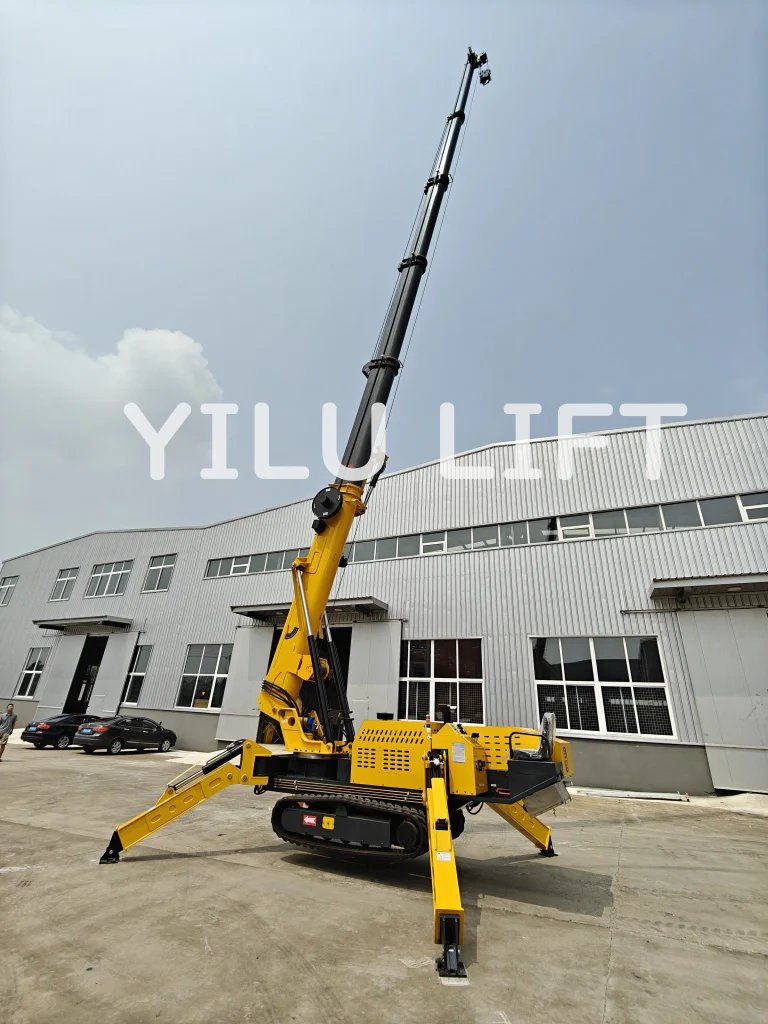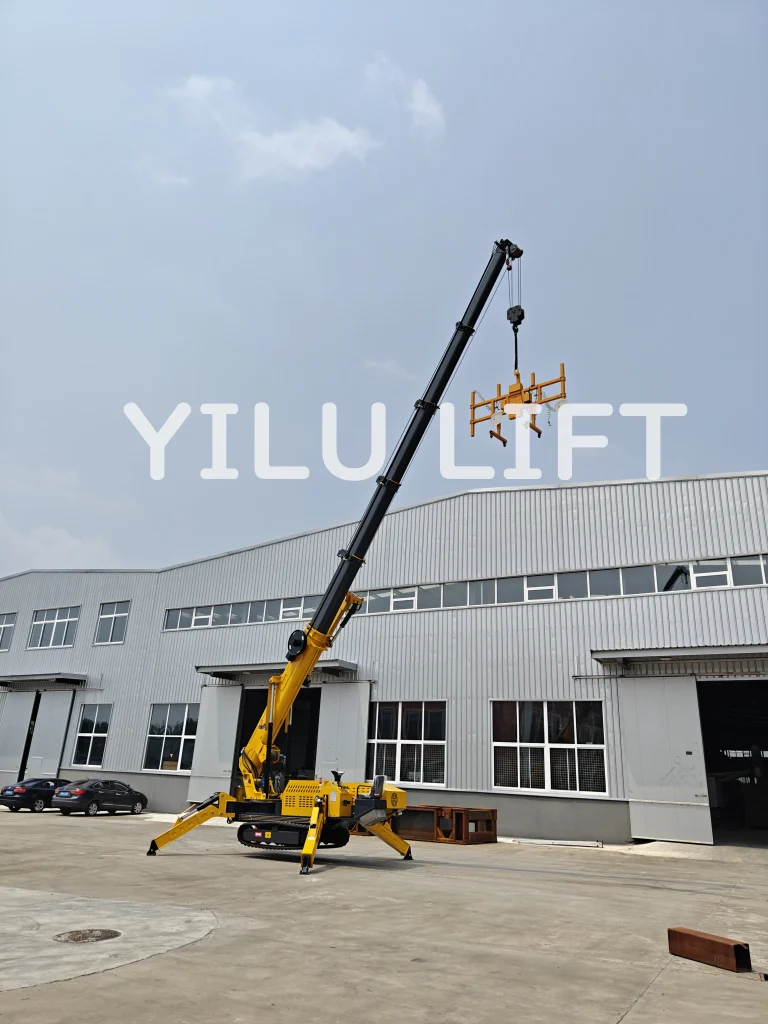How to Calculate Safe Loads for Mobile Crane
How to Calculate Safe Loads for Mobile Crane
A crane’s safe lifting power depends on its boom length, load radius, and ground stuff. This guide shows how to read load charts, dodge overloads, and use neat safety tools like YILU LIFT’s real-time trackers. Learn to make lifts awesome on any ground while keeping safety and speed first.


Understanding the Basics of Mobile Crane Lifting Capacity
What Stuff Changes a Crane’s Lifting Power?
A mobile crane’s lifting strength isn’t just one number. It changes with a bunch of things. First, the crane’s build and specs matter a ton. Longer booms or ones that stretch out can lift less when they’re super long because they wobble more. The load radius is another big deal. That’s the distance from the crane’s spin center to the load. The farther away the load, the less the crane can lift.
Ground stuff is huge too. Bumpy or soft dirt can make a crane shaky, cutting its safe lift limits. That’s why outriggers are super key. They help keep the crane steady and spread its weight out.
Also, wind can mess things up. Strong gusts make loads wiggle, which makes them harder to lift safely.
How Do Load Charts Keep Lifts Safe?
Load charts are like a crane’s introduction. They tell you what a crane can do in different setups. For example, they show max loads for boom length, load radius, and counterweights.
Crane operators gotta read these charts right to avoid overloading. Overloading can break the crane or make it tip over, which is super bad. Newer cranes have screens that show load info live. This helps operators stick to the rules.
Why Are Balance and Center of Gravity a Big Deal?
The center of gravity (CoG) is where a crane’s weight sits during a lift. If the load isn’t balanced, the CoG can shift and make the crane wobbly. This is extra risky with weird-shaped or heavy loads.
Balance comes from using counterweights and outriggers smartly. Counterweights pull against the load’s weight. Outriggers stretch out to give the crane a bigger base to stand on.
Step-by-Step Guide to Calculating Safe Lifting Loads
How Do You Check Crane Specs and Load Charts?
Start by looking at the crane’s manual or tech info. This shows its max power in perfect conditions. Then check the load chart for the setup you’re using. Make sure you think about all the bits, like how long the boom is or its angle.
For example, if you’re using a YILU LIFT crawler spider crane with a hydraulic jib add-on, double-check how extra parts change the lift power.
Why Check the Ground and Weather?
Before lifting, scope out the site. Look for bumpy ground, hidden holes, or stuff like power lines that could mess up the lift. If it’s windy or rainy outside, tweak your plan. Bad weather can shrink what a crane can safely lift.
How Do You Figure Out Load Radius and Boom Angle?
To get the load radius right:
- Measure the flat distance from the crane’s spin center to where the load is.
- Think about the boom angle. Higher angles cut down the reach but let you lift higher.
Most new cranes have boom angle gadgets. These show live info while you work.
What Do Counterweights and Outriggers Do?
Counterweights keep the crane from tipping over by balancing the load. Always use them like the manual says, or things can get shaky.
Outriggers make the crane steadier by giving it a wider base. Make sure they’re all the way out and on solid ground before you lift.
Common Mistakes to Skip When Figuring Crane Lift Power
Why Is Guessing Too Much Power Risky?
Thinking a crane can lift more than it should is bad news. It can lead to trying lifts that are too heavy, especially with long booms or far-away loads where power drops a lot.
How Do Wiggly Forces Mess with Safety?
Wiggly forces, like wind or quick moves, add surprise stress to the crane and load. They can make loads swing or bounce, which puts extra strain on the crane’s parts. Always plan for these wiggles.
What Happens If You Read Load Charts Wrong?
Messing up load charts can mean picking the wrong setup for a job. For example, not noticing less power at long booms can cause crashes. Tools like YILU LIFT’s torque alarm screens help catch these goofs.
The Role of YILU LIFT Products in Making Cranes Safer and Faster
Overview of YILU LIFT Mobile Cranes and Their Cool Bits
Mobile cranes are super stars in places like building sites or shipping yards. They lift and move heavy stuff fast. YILU LIFT mobile cranes mix smart building with cool tech to fit today’s projects. These cranes are small enough for tight spots but still lift big loads. They’ve got stretchy booms, smart load trackers, and tough frames for top work.
For example, the YILU LIFT crawler spider crane is tiny but mighty. It has extras like wireless remotes, hydraulic jib add-ons, and torque alarm screens for exact and safe lifts. Its track chassis keeps it steady on bumpy dirt. These perks make YILU LIFT a top pick for people wanting fast work without risky stuff.
How YILU LIFT Products Nail Load Math
Getting load math right is key for safe crane work. YILU LIFT cranes have fancy load trackers. These show live info on weight spread and lift angles. They warn operators when loads get too heavy, cutting overload risks. The torque alarm on some models stops accidents from big loads. Paired with clear load charts in every crane’s manual, these tools make math spot-on for each job.
Best YILU LIFT Models for Different Lifting Jobs
Every project needs a different crane. For tight spots or hard-to-reach places, the crawler spider crane is perfect. Its small size and bendy uses are great. You can add stuff like man baskets or vice jibs for special tasks. For big lifts or far reaches, towable boom lifts are awesome. They have self-leveling baskets and auto hydraulic outriggers for safe work.
Want a trusty buddy for lifting gear? Check out YILU LIFT to see their full lineup of cool solutions.

Advanced Tricks for Making Mobile Cranes Rock
How Can Tech Help Track Loads Live?
New mobile cranes use tech to give operators live updates. Digital load screens show stuff like weight spread, boom angle, and load radius right on the controls. This lets operators tweak things fast for safety and speed. Wireless remotes let you steer from a safe spot, cutting risks from hand work.
Why Is Planning Software Cool for Tricky Lifts?
Planning software is a game-changer for tough lifts. It makes virtual models of the site and crane setups. Operators can spot problems before starting. This saves mistakes and picks the best way to lift, making work smoother.
Why Are Training and Badges a Must for Operators?
Good training is huge for safe crane work. Operators need to know how to read load charts, set outriggers, and use counterweights right. Badges show they’ve learned to handle fancy gear safely. They also teach how to follow rules in all kinds of weather. Keeping up with training helps operators stay sharp with new crane tech and safety stuff.
FAQs
Q1: What makes YILU LIFT mobile cranes special?
A: Their small build, plus cool bits like wireless remotes and smart load trackers, keeps work fast and safe.
Q2: How does planning software help crane work?
A: It lets you plan lifts in a virtual world, spotting issues early and using stuff better.
Q3: Why do operators need badges?
A: Badges prove operators know how to use tricky cranes safely and follow industry rules.




